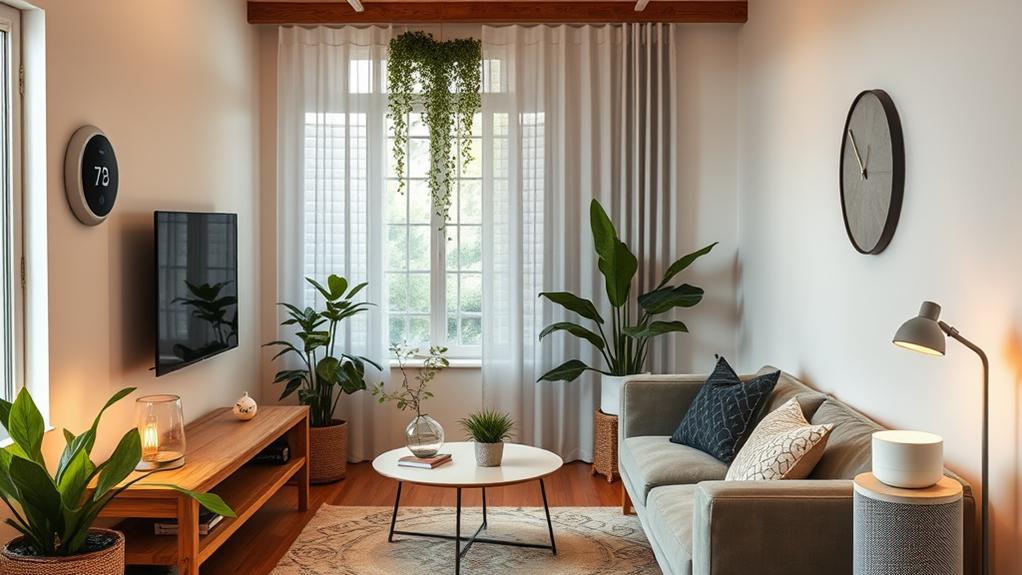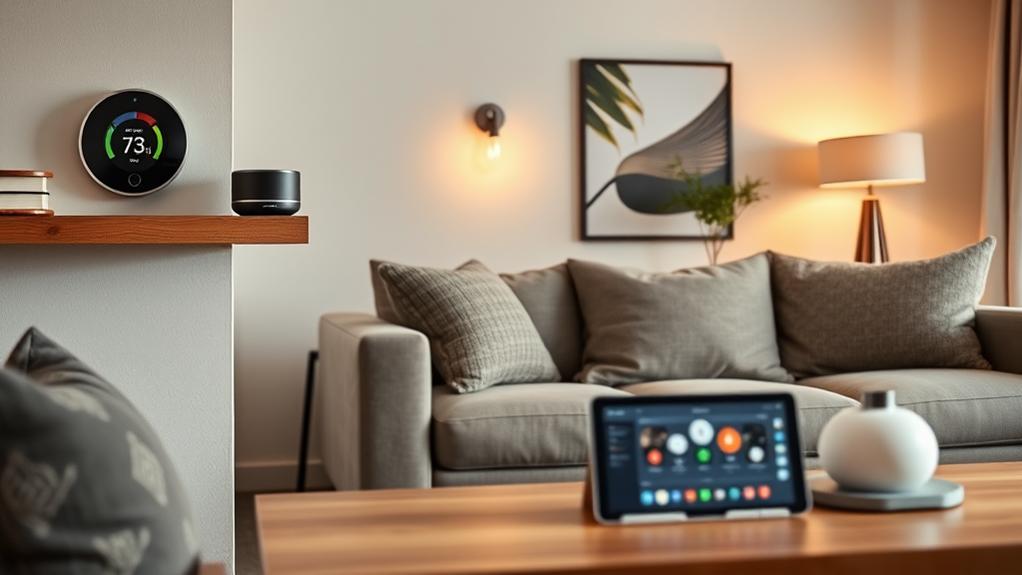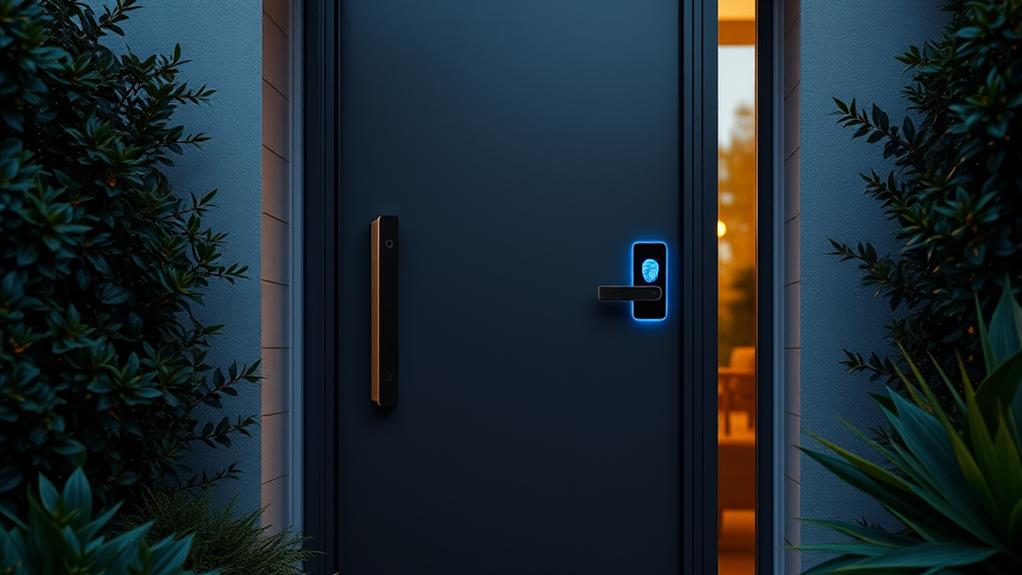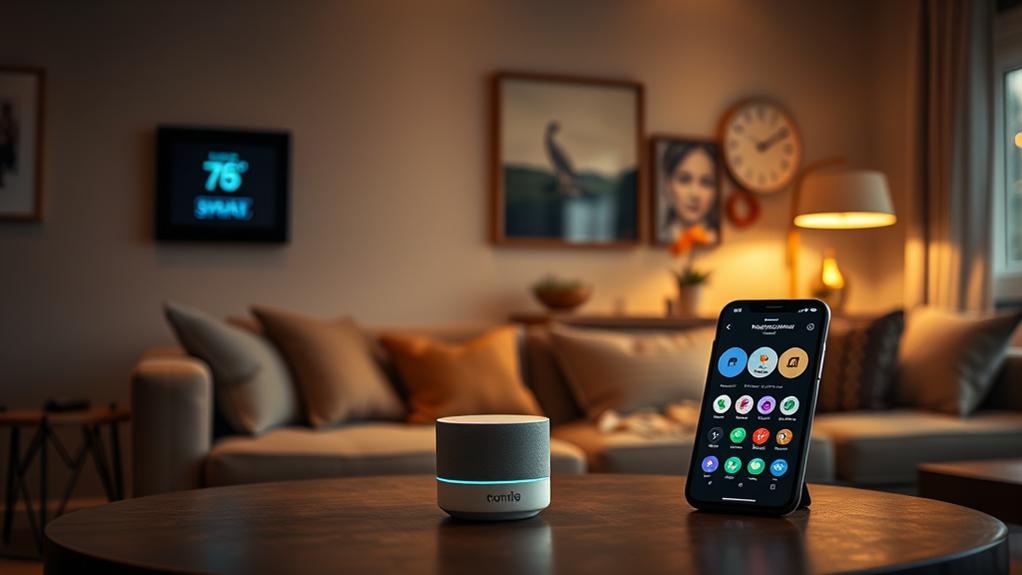Isn't it a coincidence that so many people are turning to smart home automation just as you're trying to maximize your small space? You might think that limited square footage means limited options, but that's far from the truth. By evaluating your space needs and choosing the right devices, you can enhance both convenience and efficiency without feeling cramped. Curious about how specific tips can transform your home into a more functional and enjoyable environment? Let's explore the best strategies tailored for compact living.
Assess Your Space Needs
When it comes to smart home automation in small spaces, knowing what you truly need is essential. Start by evaluating your daily routines and identifying areas where automation can save you time and effort.
Take a good look at your living space; consider how you use each room. Do you need smart lighting in your kitchen to set the mood for cooking? Or perhaps a smart thermostat that adjusts based on your schedule?
Next, evaluate the technology you already have. Sometimes, existing devices can integrate with new systems, maximizing your efficiency without overwhelming your space.
Think about your priorities: are you looking for convenience, security, or energy efficiency? Knowing this will guide your choices.
Also, consider your budget. It's easy to get carried away with the latest gadgets, but sticking to what you need will help you avoid clutter.
Make a list of essential features and functionalities you can't live without. This focused approach won't only streamline your space but also enhance your smart home experience.
Choose Versatile Devices
Choosing versatile devices is essential for smart home automation in small spaces. When you're limited on square footage, you want devices that can do more than one thing. Look for gadgets that not only serve their primary function but also integrate with other systems in your home. This approach saves space and reduces clutter.
Consider the following table to help you identify some versatile devices for your small space:
| Device Type | Functionality | Integration |
|---|---|---|
| Smart Speakers | Music playback, voice control | Works with other smart devices |
| Smart Plugs | Energy monitoring, remote control | Compatible with apps |
| Smart Hubs | Central control for devices | Connects multiple devices |
| Smart Thermostats | Temperature control, energy savings | Links to HVAC systems |
| Multi-function Sensors | Motion detection, light control | Alerts for security |
Optimize Lighting Solutions
Integrating smart lighting solutions can considerably enhance the functionality and ambiance of small spaces. By using smart bulbs and fixtures, you can easily adjust brightness and color to suit various moods and activities. For instance, you might prefer warm light for cozy evenings and bright white light for focused tasks.
Consider installing smart dimmers, which allow you to control the intensity of your lights with just a tap on your smartphone or voice command. This flexibility helps create a more inviting atmosphere without overwhelming the space with harsh lighting.
Don't forget about smart lighting schedules. You can set your lights to automatically brighten in the morning and dim in the evening, mimicking natural light patterns. This not only saves energy but also enhances your daily routine.
Lastly, think about using motion sensors. They can automatically turn lights on when you enter a room and off when you leave, adding convenience and efficiency to your home.
Utilize Smart Plugs
Smart plugs can effortlessly transform your small space into a more efficient and convenient environment. By plugging your devices into smart plugs, you gain control over your electronics from anywhere, right from your smartphone or tablet. You can turn on or off appliances like lamps, fans, or coffee makers with just a tap, saving you time and energy.
One of the best features of smart plugs is their scheduling capability. You can set specific times for your devices to turn on or off, ensuring that you never waste electricity when you're not home. This is especially useful for small spaces where every bit of energy counts.
Additionally, many smart plugs offer energy monitoring, allowing you to track your usage and find ways to reduce your bills.
Moreover, you can create scenes or routines that automate multiple devices with one command. For instance, set a morning routine that turns on your coffee maker and lights simultaneously, making your mornings smoother.
Ultimately, smart plugs are an easy and effective way to enhance your small space, bringing convenience and control right to your fingertips. Embrace smart plugs, and watch your efficiency soar!
Implement Voice Control
Voice control can revolutionize how you interact with your smart home in a small space. By integrating voice-activated devices, you can streamline your daily routines without cluttering your environment with physical controls. Imagine turning on lights, adjusting your thermostat, or playing music simply by speaking.
Here's a quick overview of popular voice control devices and their features:
| Device Type | Key Feature | Recommended Use |
|---|---|---|
| Smart Speakers | Voice assistant integration | Music and reminders |
| Smart Displays | Visual feedback and control | Home monitoring |
| Smart Thermostats | Temperature adjustment by voice | Energy saving |
| Smart Lights | Voice-activated lighting control | Ambiance creation |
| Smart Plugs | Control any device with voice | Remote operation |
Setting up voice control doesn't require a lot of space. Even in a compact area, you can maximize convenience and accessibility. Just verify your voice assistant is compatible with your smart devices. Once you've got everything connected, you'll find that managing your home becomes more intuitive and enjoyable. Embrace the ease of voice control and transform your living space today!
Enhance Security Features
Security is a fundamental concern for anyone living in a small space, and enhancing your home's security features can provide peace of mind.
Start by installing smart locks on your doors; these not only offer keyless entry but also allow you to monitor who enters and exits your home. You can set unique access codes for family members or trusted friends, adding an extra layer of control.
Next, consider adding smart cameras. Place them strategically to cover entry points and the interior of your home. With real-time alerts and video streaming to your smartphone, you'll stay informed and can react quickly to any suspicious activity.
Don't overlook window sensors either. These small devices can notify you if a window is opened unexpectedly, helping you keep an eye on your surroundings.
Additionally, integrating motion detectors with your lighting system can deter potential intruders, as lights will turn on automatically when someone approaches.
Integrate With Existing Systems
Incorporating smart home technology with your existing systems can streamline your daily routines and enhance functionality. By integrating devices like smart lights, thermostats, and security systems, you'll create a seamless environment that adapts to your needs. Start by evaluating what you've already got in place. This allows you to choose compatible smart devices that complement your current setup.
To help you visualize this integration, here's a quick comparison of common systems and their smart counterparts:
| Existing System | Smart Integration |
|---|---|
| Traditional Thermostat | Smart Thermostat |
| Standard Lights | Smart Bulbs or Switches |
| Basic Security Camera | Smart Security Camera System |
| Regular Door Lock | Smart Lock |
| Conventional Speaker | Smart Speaker |
Conclusion
By embracing these smart home automation tips, you're not just optimizing your small space—you're transforming it into a haven of convenience and comfort. Imagine a world where your lights adjust with your mood, and your home responds to your voice. This isn't just about technology; it's about enhancing your lifestyle. So, why settle for ordinary when you can create a seamless, smart environment that reflects your needs and aspirations? Your small space can be a big step toward smarter living.











